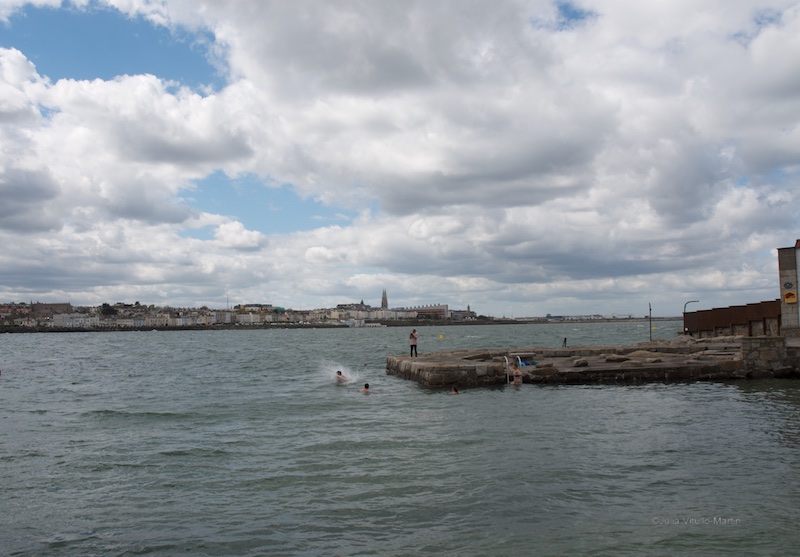
Bloomsday, the world-wide event that has been celebrated in hundreds of cities since the 1920s, commemorates the life of James Joyce as well as his first date in 1904 when he “walked out” with Nora Barnacle, who became his wife. She was also the inspiration for Molly Bloom, married to Leopold, the protagonist of Ulysses who wanders Dublin on June 16 from 8 am until the early hours of the morning, when Molly delivers her famous soliloquy that closes the book: “Yes I said yes I will Yes.”
Dublin
As the city Joyce loathed and loved—“When I die Dublin will be written in my heart” he once said—Dublin is the queen city of Bloomsday, with happenings occurring throughout the month of June and spilling over into the rest of the summer. In also observing the centenary of the Easter Rising of 1916, Dublin is experiencing a triumphant, festive year. Because both Joyce and Bloom roamed much of the city, you can start your Bloomsday journey almost anywhere. But a good spot is the Martello Tower, which the Lonely Planet calls “arguably the most iconic building in world literature.” Here Joyce spent his last few days in Dublin before his self-exile from Ireland, and here he begins the story of Ulysses from the top of the tower, a castle overlooking a port from which an Odyssey could embark.
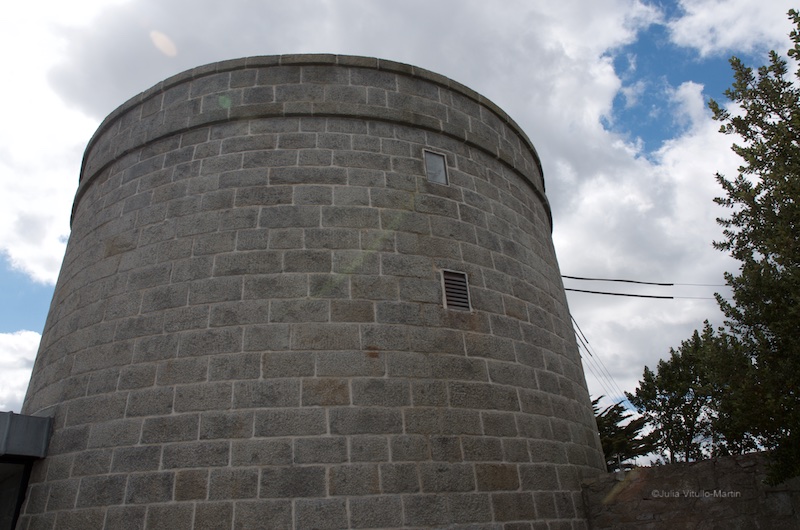
Joyce had been living with his friend (we would say frenemy), the poet and physician Oliver St. John Gogarty, on whom he based his first character, the usurper Mulligan: “Stately, plump, Buck Mulligan came from the stairhead, bearing a bowl of lather on which a mirror and a razor lay crossed.” Thus the reader is quickly introduced to the sardonic, cold eye that Joyce will cast on religious symbolism. And while Joyce was bitter about being forced to leave the tower, he was quite proud of its place in history, and has Mulligan say of Martellos: “Billy Pitt had them built when the French were on the sea. But ours is the omphalos.” (Ulysses treats Greece as the mother civilization. Zeus had sent his eagles to meet at the center of the world or omphalos—the Greek word for navel, which Joyce uses repeatedly.)
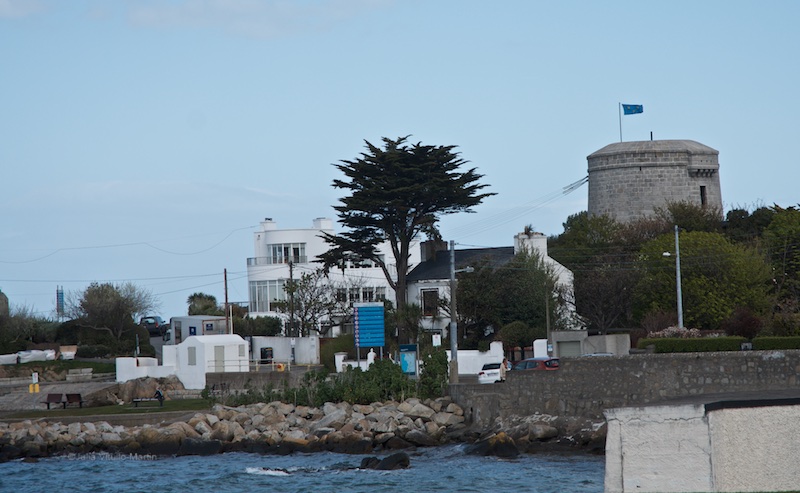
The James Joyce Museum, housed in the Martello that is now called the James Joyce Tower, runs a week-long festival that may offer Dublin’s most comprehensive set of readings, tours, and musical events (Joyce was so talented musically that he could have turned professional). Museum director Robert Nicholson once noted that since starting his job as director in 1978 Bloomsday had changed from “an occasion of somewhat esoteric enjoyment to a city-paralyzing street party.” Yet the annual rituals, he said, remain constant: “the rising at six o’clock, the bicycle ride to Sandycove, the early swim at the Forty Foot, the donning of the ceremonial suit, the local breakfast, the raising of the flag and opening of the Tower at eight o’clock, the arrival of the hundreds and multitudes, the rooftop readings in the sunshine, the escape at the end of the day for dinner with other survivors from the James Joyce Institute.”
James Joyce Museum
Sandycove Point
County Dublin
+353 1 280 9265
[email protected]
Open 365 days a year, 10am-6pm, admission free, and all Bloomsday events free
Getting there: Eight miles south of Dublin City Centre on the coast
By train: DART to Sandycove
By bus: 59 from Dún Laoghaire
Another comprehensive approach is taken by the James Joyce Centre, run by the Joyce family and dedicated to his work. Walking tours of Dublin are offered three times weekly, with many special readings and walks around Bloomsday itself. The emphasis is on the details of the influence of the “Hibernian metropolis” on Joyce.
Address: 35 North Great George’s Street, City of Dublin
+353 1 878 8547
[email protected]
Admission: €5 for adults, €3.5 for students
The Georgian street on which the Joyce Centre is located becomes each year the site of the Bizarre Bloomsday Brunch and Street Fair, “a celebration of all the weird and wacky parts of Joyce with food, performances, games and music from the pages of Ulysses.” On June 14 there will be three sittings for a brunch (charge: €20) but the event itself is free.
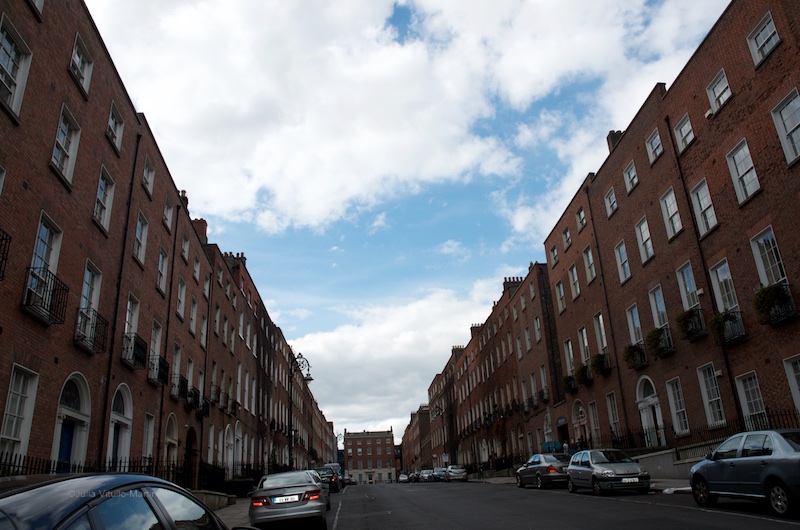
New York City
Dublin goes slightly crazy for Bloomsday—but so does New York, where Bloomsday is observed with a special exuberance. Joyce is honored as if he were the rock star of intellectuals. (It helps that he looked like a rock star.)
Here are a few events:
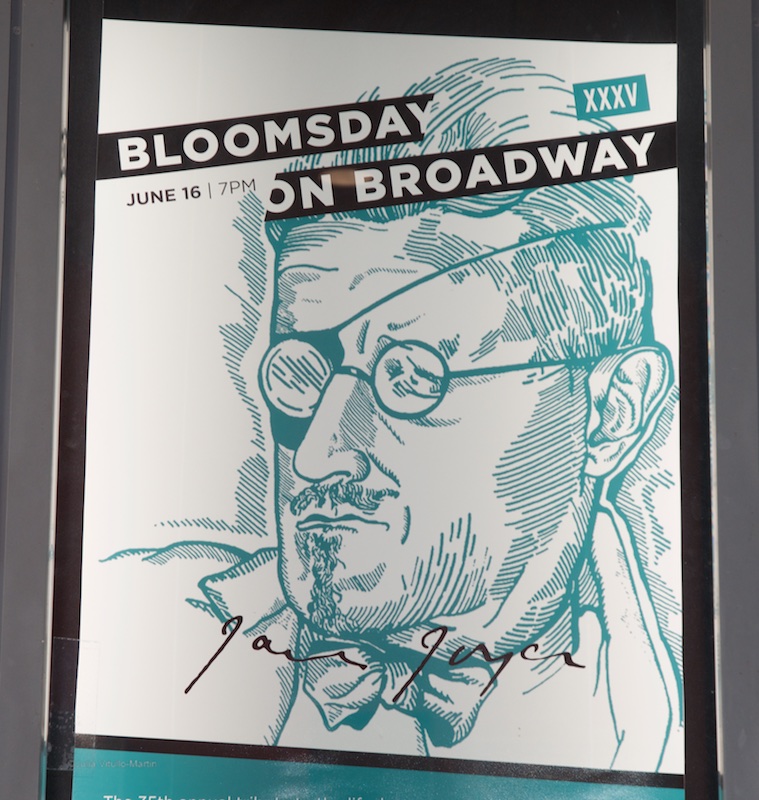
The Upper West Side’s Symphony Space hosts the most important Bloomsday in the US. Founded in 1982 by the late Isaiah Sheffer, Bloomsday on Broadway sets out to entertain and does. “I’ve been asked,‘Is this a serious literary event or a grand drunken reunion for all your actor friends?’” Sheffer once recounted in the New York Times in 2004. His answer: “Yes!”
This year’s 35th B on B commemorates both Joyce and the 1916 Easter Week Rising: “The 35th annual tribute to the life, language, and love of James Joyce’s timeless prose with wonderful actors and avid Joyceans. This year’s event features a celebration of the of the centennial of A Portrait of the Artist as a Young Man, as well as The Art of Ulysses, a breathtaking whirlwind tour in 17 acts curated by Neil Hickey; a reading from the magnificent Molly Bloom soliloquy read by Fionnula Flanagan, and a special tribute to the writers and rebels behind the 1916 Easter Rising. Directed by Olivier Award winner Jim Culleton, with musical direction from Lisa Flanagan. In collaboration with Irish Arts Center.”
Peter Jay Sharp Theatre at Symphony Space
Address: 2537 Broadway at 94th Street
212-864-5400
Thu, June 16, 7:00 pm
$26 (members: $21), 30 & under $15
Bloomsday Breakfast
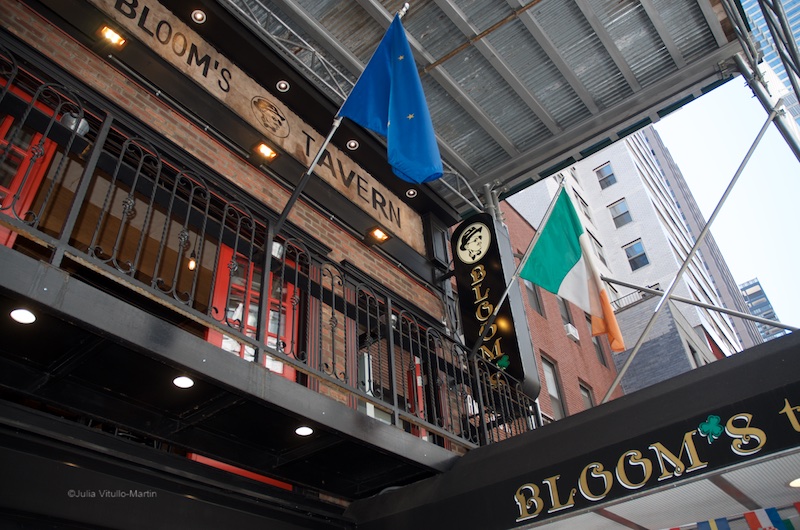
This event looks like huge fun and it’s free: “Origin Theatre’s 3rd annual site-specific Bloomsday Breakfast beginning at 7:30am, features a rollicking roster of writers, actors, musicians and business leaders who recreate the summer morning chronicled by James Joyce in Ulysses in Dublin on June 16, 112 years ago. Among the notables in the case are Malachy McCourt, Colin Broderick, Jim Norton, Fionnula Flanagan, Charlotte Moore, Terry Donnelly, Brenda Meaney, and Fiona Walsh. There will also be a special appearance by members of the cast of the new Off-Broadway musical Himself and Nora. The spontaneous group ‘performance’ is fueled by a traditional Irish breakfast, with blood sausage and kidney pie among the edible delicacies, and refreshing summer drinks. Serving as hosts are the director David Staller (Project Shaw), and the Irish-folk-rock troubadour Alan Gogarty on guitar.”
Many guests dress in Edwardian clothes, a Bloomsday tradition.
Address: 208 East 58th Street (2nd & 3rd Aves)
212-308-9400
[email protected]
Reservations are a must: [email protected]
Himself and Nora
A musical about James Joyce and his wife Nora seems a little unconventional but it “revels in a complicated Joyce,” concludes the New York Times.
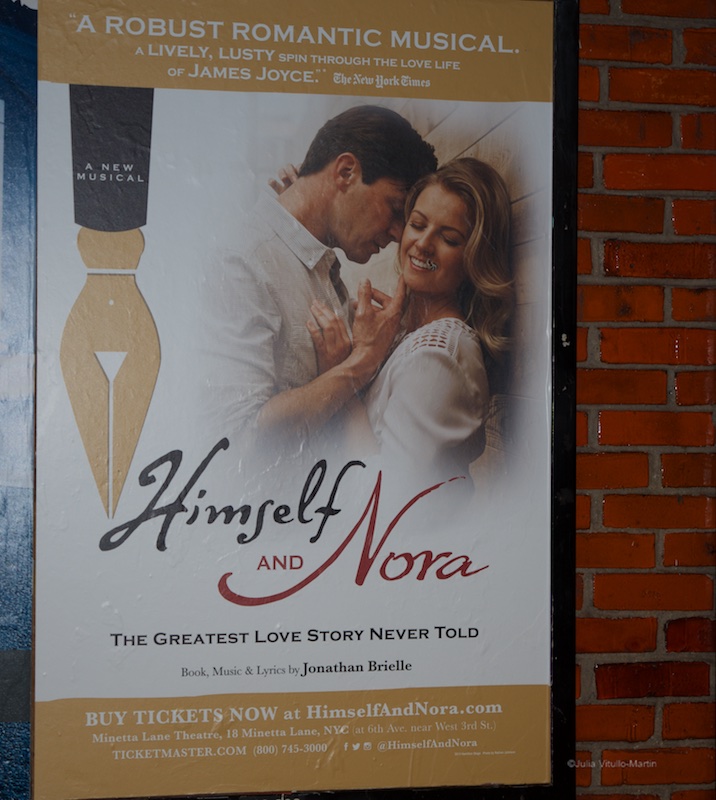
The theatre summarizes: “It is one of the world’s great romances. Himself: an internationally acclaimed author, whose words awakened the world. Nora: the chambermaid, whose passion and acerbic wit ignited the genius of James Joyce. Ripped from pages of their intimate life together and inspired by their Irish roots, Himself and Nora is, says the New York Times, a ‘lively, sometimes lusty, spin through the love life, troubles and literary times of the great Irish writer.’”
Minetta Lane Theatre
Perfs: Tues 7pm, Wed-Sat 8pm, Wed & Sat 2pm, Sun 3 pm
18 Minetta Lane (betw MacDougal & 6th Ave)
800-745-3000
Ulysses, A Folk House
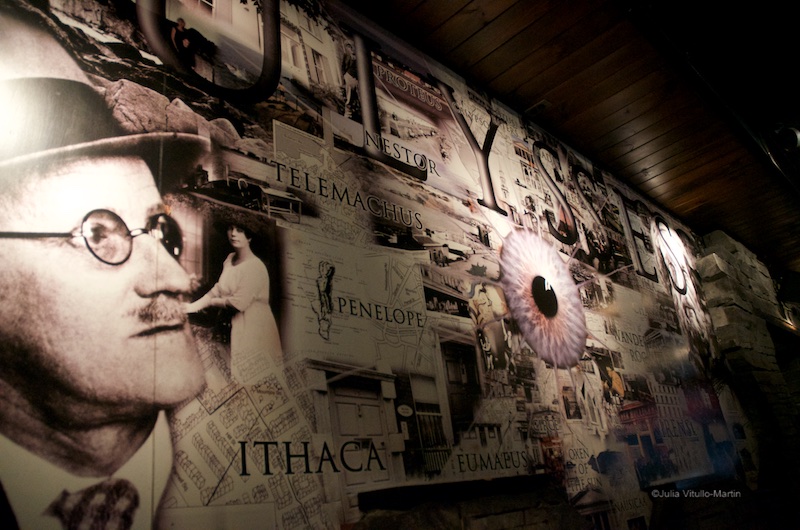
Founded by a former bee-keeper from Sparta, Greece, and a former bartender from Ireland, Ulysses does one of the many things Joyce intended: it unites Greek and Irish civilizations. As such, the folk house does the celebration up right, with complimentary drinks, good Bloom-like food, and many readings. When the weather is good, Bloomsday spills into the adjoining outdoor space and becomes a street party.
The Folk House calls Ulysses the “most celebrated book ever written.” Looking at the celebrations in Dublin and New York it would be hard to disagree.
Address: 95 Pearl Street
212-482-0400
Open 11am-4am
Julia Vitullo-Martin is a senior fellow at the Regional Plan Association. She can be reached @JuliaManhattan.





